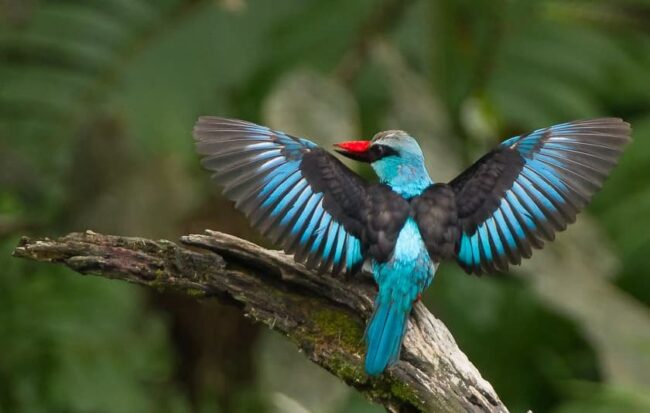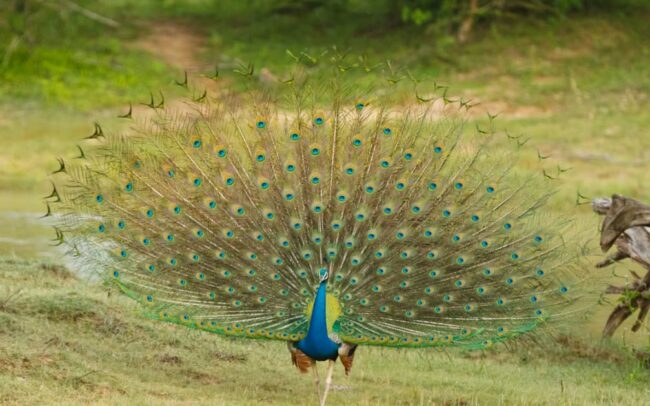The Red Junglefowl (Gallus gallus) is a wild bird that is native to Southeast Asia. It is the ancestor of the domestic chicken, and it is still found in the wild in some parts of its range. The Red Junglefowl is a colorful and social bird, and it is an important part of the ecosystem in its native habitat.
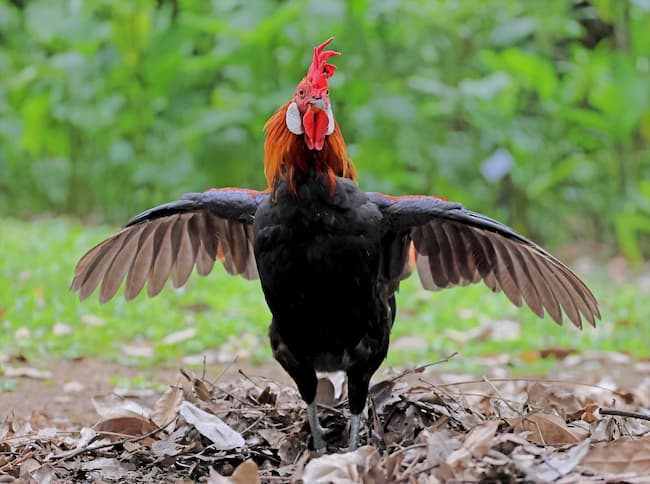
The Red Junglefowl is a medium-sized bird, measuring about 20 inches in length and weighing up to 3 pounds. It has a long, slender body, a long neck, and a long tail. The plumage of the Red Junglefowl is mostly red, with black markings on the wings and tail. The male Red Junglefowl has a distinctive comb on its head, and a pair of wattles that hang down from its neck.
Behavior
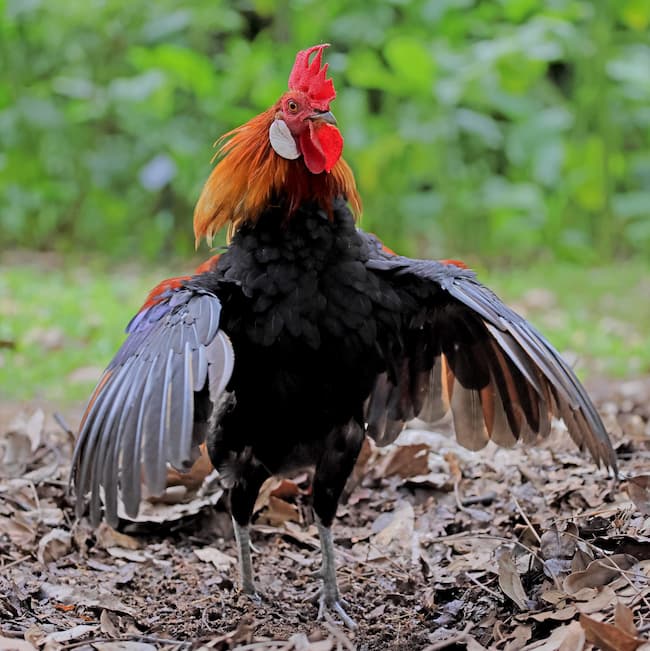
The Red Junglefowl is a social bird, and it lives in flocks of up to 50 birds. The flock is led by a dominant male, who is the only male that is allowed to mate with the females. The Red Junglefowl is an omnivorous bird, and its diet consists of a variety of foods, including insects, fruits, seeds, and small animals.
Diet
The Red Junglefowl is an omnivorous bird, and its diet consists of a variety of foods, including insects, fruits, seeds, and small animals. They are known to eat a variety of insects, such as beetles, grasshoppers, and ants. They also eat fruits, such as berries, figs, and mangoes. The Red Junglefowl will also eat seeds, such as rice and corn. They will even eat small animals, such as lizards and frogs.
Habitat
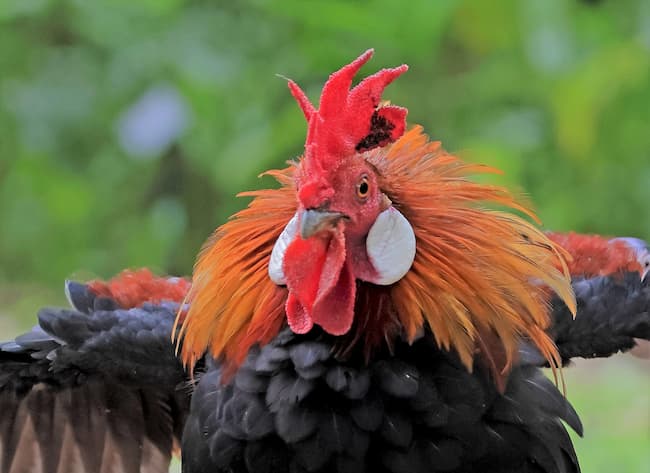
The Red Junglefowl is found in a variety of habitats, including forests, grasslands, and swamps. They are most common in areas with plenty of food and water. The Red Junglefowl is found in Southeast Asia, from India to Indonesia.
Reproduction
The Red Junglefowl breeds in the spring and summer. The male Red Junglefowl will establish a territory, and he will attract females to his territory by displaying his plumage and calling. The female Red Junglefowl will lay a clutch of 4-12 eggs, and she will incubate the eggs for about 21 days. The young birds will fledge after about 6 weeks.
Conservation Status
The Red Junglefowl is not considered to be a threatened or endangered species. However, their populations have declined in some areas due to habitat loss and hunting.
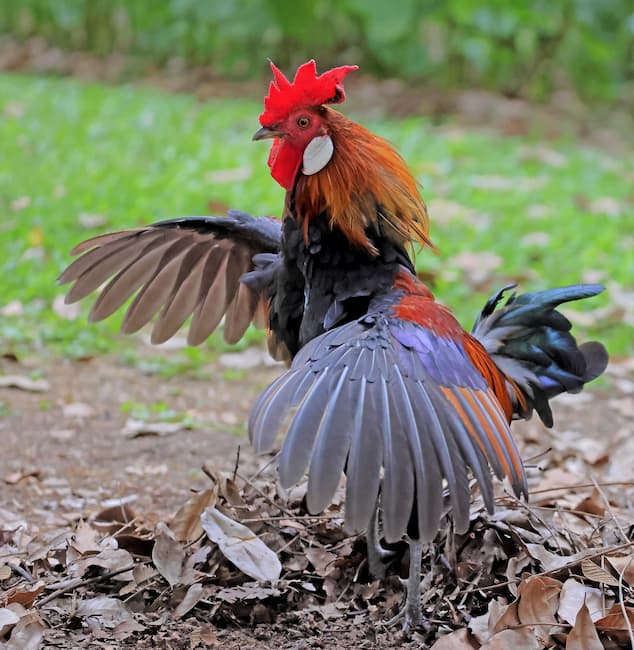
Interesting Facts
- The Red Junglefowl is the ancestor of the domestic chicken.
- The Red Junglefowl is a social bird, and they live in flocks of up to 50 birds.
- The male Red Junglefowl has a distinctive comb on its head, and a pair of wattles that hang down from its neck.
- The Red Junglefowl is an omnivorous bird, and its diet consists of a variety of foods.
- The Red Junglefowl is found in Southeast Asia, from India to Indonesia.
Frequently Asked Questions
- Where can I find Red Junglefowl in the wild?
Red Junglefowl are found in Southeast Asia, from India to Indonesia. They are most common in areas with plenty of food and water.
- What do Red Junglefowl eat?
Red Junglefowl are omnivorous birds, and their diet consists of a variety of foods, including insects, fruits, seeds, and small animals.
- How do Red Junglefowl breed?
The Red Junglefowl breeds in the spring and summer. The male Red Junglefowl will establish a territory, and he will attract females to his territory by displaying his plumage and calling. The female Red Junglefowl will lay a clutch of 4-12 eggs, and she will incubate the eggs for about 21 days. The young birds will fledge after about 6 weeks.
- Are Red Junglefowl endangered?
The Red Junglefowl is not considered to be a threatened or endangered species. However, their populations have declined in some areas due to habitat loss and hunting.
Conclusion
The Red Junglefowl is a beautiful and fascinating bird. They are an important part of the ecosystem in their native habitat, and they are the ancestors of the domestic chicken. I hope you enjoyed learning about the Red Junglefowl!
I hope this helps! Let me know if you have other requests or questions.
